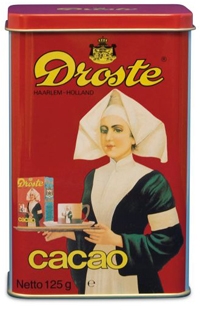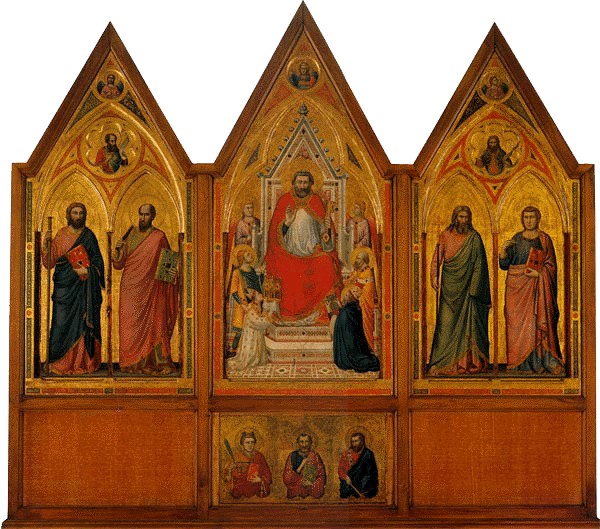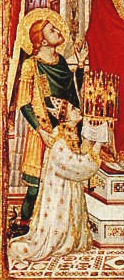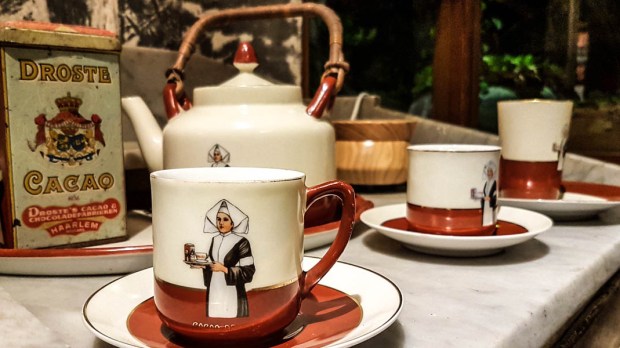When you see a picture that contains a smaller picture of itself, which contains another smaller picture of itself, and so on and so on, you are seeing what’s known as the Droste effect.
The visual effect takes its name from the popular Dutch brand of cocoa, Droste, which features an illustration of a nurse on its cocoa tins. Designed by Jan Misset in 1904, the label on the tin shows the nurse holding a tray containing a steaming cup of cocoa and a Droste tin with her likeness on it. If only the resolution of the picture were better, you could see tinier and tinier nurses ad infinitum.

Droste, however, was not the first to employ what is known in the mathematical world as a recursive visual effect. The technique appeared in medieval art, including in Giotto’s Stefaneschi Triptych of 1320. The altarpiece depicts Cardinal Giacomo Gaetani Stefaneschi holding the very triptych he is depicted on as he offers it to St. Peter.


In spite of its medieval beginnings, the Droste effect has perhaps found its natural home with digital technology, which allows for the easy reproduction of images within images. No longer does poor resolution prevent us from seeing smaller and smaller identical images within an image. We can now do so — into infinity — but really, why would would we want to? Some things are better left to the imagination.


